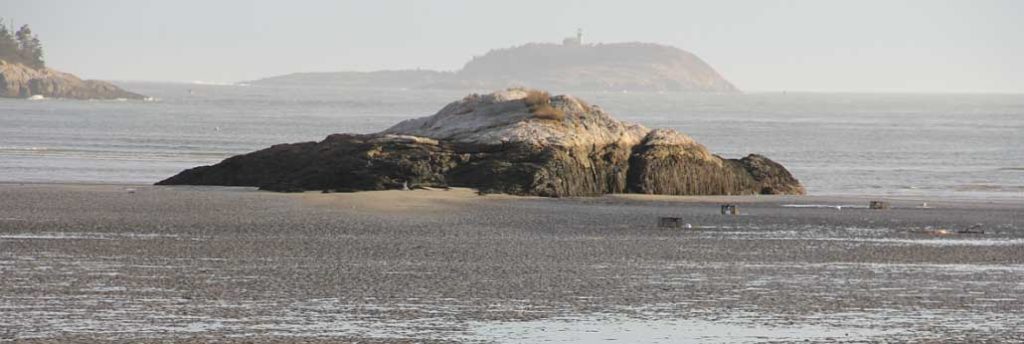A grant from the Maine Coastal Program will allow regulators to more precisely identify what areas of the Washington County coast need to be closed to shellfish harvesting after heavy rains.
The $27,000 Coastal Communities grant, awarded to the Washington County Council of Governments, will pay for the purchase of ten weather stations with rain gauges. Shellfish harvest closures are often triggered by heavy rains, which dump pollutants into mudflats.
The Department of Marine Resources relies on a network of rain gauges to determine when to close flats because of the threat of shellfish contamination. As it now stands, that web of gauges thins out the further Downeast one travels.
“There’s a long way between rain gauges in Washington County,” said Kohl Kanwit, DMR’s director of public health.
The ten weather stations will help close the gap between gauges, said Crystal Hitchings, regional planner for the county’s council of governments.
Already, six of the stations have been placed near municipal buildings or on private land in Washington County.
The stations are currently installed in Jonesboro, Jonesport, Machiasport, Harrington, Steuben, and Milbridge, with another scheduled to be installed in Pembroke, according to Hitchings.
The gauges wirelessly transmit readings to Weather Underground, where it is made available for regulators and the general public to view. Because rainfall can be extremely localized, these readings could shrink the area needed for a closure, Hitchings said.
“Clam flats get closed down sometimes when they don’t need to be closed,” she said.
Of course, better data could cut both ways; some stakeholders expressed concern that the gauges could lead to more closures, Hitchings said.
Such closures would be necessary, as shellfish exposed to pollutants could carry dangerous biotoxins, including fecal coliform and phytoplankton, and chemical contaminants. Ingesting contaminated shellfish can cause several life-threatening medical conditions, including paralytic shellfish poisoning, amnesic shellfish poisoning, and diarrhetic shellfish poisoning.
The ability to better define closure boundaries could have both public health and economic benefits.
Hitchings notes that clam landings brought in $4.1 million to Washington County’s economy in 2013, the last year that such an economic assessment has been calculated. Most of that economic activity pauses with a heavy rainfall. More gauges also could help municipalities detect local sources for pollution, she said. Hitchings hopes the county council of governments will work with communities to crunch the data to find pollution sources like failing septic systems and overboard discharge systems.
A press release and the minutes of a July shellfish advisory council meeting characterize the ten devices purchased as rain gauges, but they are more accurately described as weather stations.
The Maine Coastal Program is overseen by the Maine Department of Agriculture, Conservation, and Forestry, which also maintains a system of weather stations throughout the state. While simpler rain gauges would have been cheaper to purchase, it was decided to spend a bit more for the devices to provide more weather data, including barometric pressure, wind speed and humidity. The weather stations were made by Rainwise Incorporated, a company based in Trenton.
The information provided by sensors on the stations could be used by meteorologists and others to check the accuracy of current weather forecasting models for the Downeast region. That data could lead to a better understanding of localized weather patterns, according to Alex Birdsall, vice-president of strategic partnerships for Rainwise.
“It’s microclimate analysis for a part of the world that gets pretty interesting weather,” Birdsall said.
The weather station models sell for about $1,000 each, with a wall-mount display available for an additional $495 per unit. The devices are built to be rugged, but do require some of maintenance.





